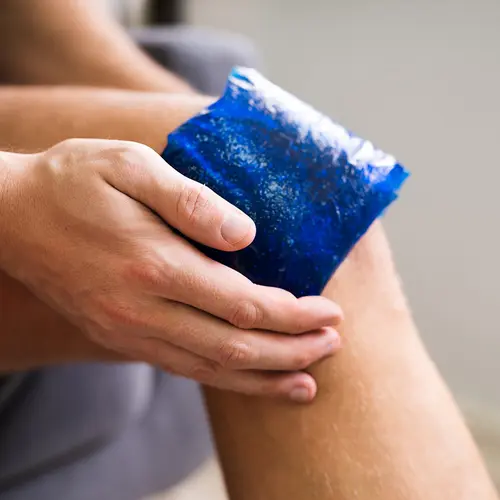Tendons are the tissues that attach your muscles to your bones. Ligaments are what attach your bones to one another. The place where a tendon or ligament meets your bone is called an enthesis. Your doctor might use the plural, entheses.
Enthesopathy is an umbrella term for conditions that affect these connection points. Enthesitis is when they get inflamed and become painful because of injury, overuse, or disease.
Enthesitis is common in some forms of arthritis, including psoriatic arthritis and ankylosing spondylitis. It also can happen in some children with juvenile idiopathic arthritis (also known as juvenile rheumatoid arthritis).
It isn’t usually linked to osteoarthritis or adult rheumatoid arthritis (RA), but people with those conditions can have it.
Enthesitis Symptoms
Common spots for enthesitis to happen are around your heel, knee, hip, toe, elbow, backbone, and the bottom of your foot. The inflammation can lead to pain and stiffness, especially when you're moving. You also might notice swelling around those areas.
Soreness at the back of your heel caused by enthesitis is sometimes called Achilles tendinitis or plantar fasciitis pain at the bottom of your foot. This pain can make it hard for you to run or climb stairs.
Over time, enthesitis can lead to:
- Calcification or ossification: Inflammation of the entheses can cause new bone tissue to form. That new bone tissue gets in the way of normal movement and function -- like a bone spur on your heel.
- Fibrosis: Tissues in the affected area become ropey.
Enthesitis Diagnosis
Enthesitis is hard to diagnose. The doctor will give you a physical exam, check for swelling, and to see if the area hurts when compressed. They’ll ask if the pain gets better after you exercise. You might get lab tests that look for signs of inflammation and imaging tests so your doctor can get a good view of your joints.
Enthesitis Treatment
There’s no specific treatment for enthesopathy, but there are treatments for the diseases that lead to it. Usually they’re a mix of exercise, rest, and medication. Your doctor can help you decide what’s right for you. Non-steroidal anti-inflammatory drugs (NSAIDs), like naproxen and ibuprofen, can help with inflammation and pain. If the enthesitis is caused by an autoimmune arthritis, your doctor also may prescribe a disease-modifying anti-rheumatic drug (DMARD) or biologics.
They may recommend steroids for areas that are especially stiff or painful.
Types of Enthesopathies
There are many. Some of the most common are:
- Ankylosing spondylitis
- Plantar fasciitis
- Achilles tendinitis
- Rotator cuff syndrome of shoulder and allied disorders
- Enthesopathy of elbow region
- Enthesopathy of wrist and carpus
- Bursitis of hand or wrist
- Enthesopathy of hip region
- Bursitis of hip
- Enthesopathy of knee
- Enthesopathy of ankle, tarsus, and calcaneus
The Connection With Arthritis
Some kinds of arthritis are autoimmune disorders. This means your body's immune system makes chemicals that attack and damage your own tissues. This can cause enthesitis.
It's a common symptom of two kinds of autoimmune arthritis -- psoriatic arthritis and ankylosing spondylitis. Psoriatic arthritis, which is common in people with the skin condition psoriasis, can affect your entire body. Ankylosing spondylitis mainly affects your spine.
Enthesitis also happens in about 10% to 20% of children with juvenile idiopathic arthritis, which can affect one or more joints and lasts at least 6 weeks. These children are described as having enthesitis-related arthritis (ERA).
Kids with juvenile arthritis often have a family history of inflammatory conditions, like ankylosing spondylitis, psoriatic arthritis, or inflammatory bowel disease. They also have eye redness and pain due to inflammation, along with other arthritis symptoms.

